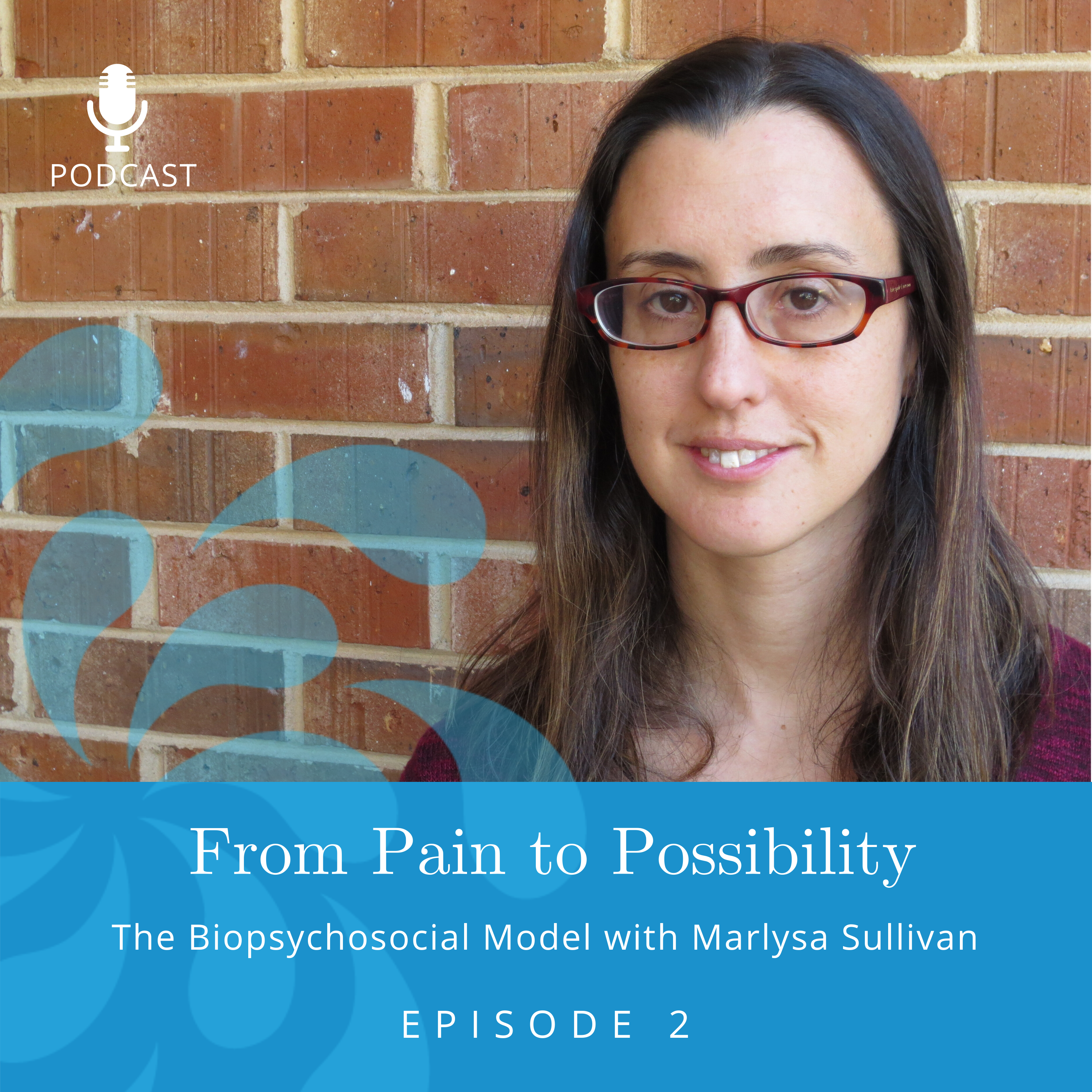EPISODE 2:
The Biopsychosocial Model with Marlysa Sullivan
Have you heard of the polyvagal theory? Listen as your host Susi Hately and her guest Marlysa Sullivan discuss this theory, the roles of our sympathetic and parasympathetic systems and relaxation, gunas, and much more in this episode of From Pain to Possibility.
Marlysa is an assistant professor at the Maryland University of Integrative Health, where she teaches in the integrative health sciences and yoga therapy departments. She’s developed courses in the yoga therapy curriculum and is the founding clinical director for the Master of Science in Yoga Therapy program at Maryland University.
Listen, as Marlysa describes the polyvagal theory, how the autonomic nervous system works, and the three qualities of gunas. Marlysa shares how with the two models of polyvagal theory and gunas, it shows how to work with clients from a yogic perspective. She also discusses how she starts a conversation about gunas with some clients she will speak to them in the language of gunas.
Marlysa speaks about the use of yamas and niyamas in her sessions, and how all of this circles back to polyvagal theory. Even though all of this sounds so complex, it becomes simple as you practice it, pure in terms of the result you are seeking and as you develop it into an art of how you start and how you continue.
This is a great topic, and the way Marlysa describes it integrates it so nicely with the biomedical and the biopsychosocial model. Susi has such a great conversation with Marlysa that you will want to sit in a comfy chair, prop your feet up, and relax because you don’t want to miss this episode.
In this Episode:
[01:22] Welcome, Marlysa!
[02:09] Marlysa shares her background and her journey to where she is now.
[05:05] How would you describe polyvagal theory?
[07:24] Marlysa shares how the autonomic nervous system can either have a relaxed response or life-threat response.
[10:19] If we are in a shutdown dissociative state, can we get stuck there?
[11:52] Marlysa discusses the three qualities of gunas.
[13:16] Marlysa shares how gunas are similar to this idea of the autonomic nervous system.
[15:17] What is nice about these two models of polyvagal theory and gunas is that they show that we can work with clients from a yogic perspective.
[16:45] How would you start the conversation with clients around gunas?
[17:38] Marlysa shares that she speaks to clients in the language of the gunas.
[20:45] Marlysa speaks about how yoga is supportive, and this qualitative measure can bring more detail or direction to support someone’s process.
[23:04] What are some ideas of ways they can start integrating these ideas or just thoughts to think about as they move towards integration?
[26:47] Marlysa shares about yamas and niyamas and what they are.
[29:19] Marlysa speaks about knowing when you are centered in your expression of compassion that supports you and those around you.
[30:22] How does this all circle back to polyvagal theory?
[34:31] Thank you so much for being on the show!
“When we play around with the guna world, there’s an exploratory, curious space.” Susi Hately
“A cool concept in yoga is this idea of yamas and niyamas, which are these ethical purposes of yoga.” Marlysa Sullivan
“So then, as complex as it can be, it becomes simple as you practice it.” Susi Hately
Connect with Susi
Do you have a question or a desire for more learning opportunities at Functional Synergy? Let's Connect!
Subscribe to my Mailing List
Never miss a new episode!
Subscribe to the Podcast Mailing List below.





